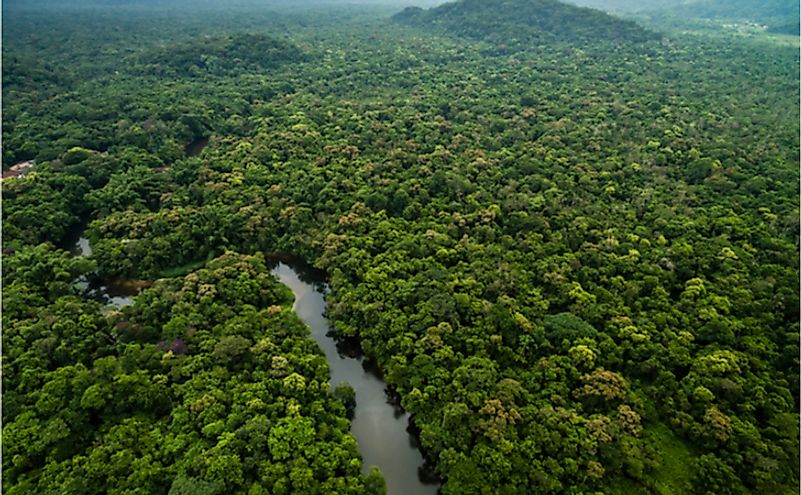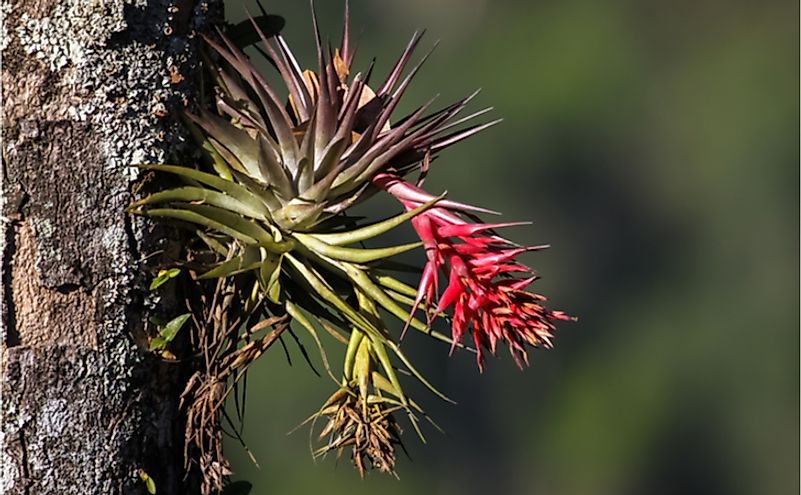How Are Plants Adapted To The Tropical Rainforest?

Tropical rainforests occur in places with a tropical climate where there is no dry season. Hot and humid weather with high rainfall throughout the year characterize such climate. True rainforests are found up to 10 degrees of latitude on either side of the equator. Tropical rainforests have the greatest biodiversity of all other ecosystems on the planet as both sunshine and water are available in plenty in such forests. However, due to the dense growth of plants, there is fierce competition for survival in such habitats. As such, plants growing here have special adaptations that allow them to grow and thrive in the tropical rainforest. These specializations have been mentioned below.
8. Buttress Roots -

Tropical rainforest plants with a shallow rooted tree are often equipped with buttress roots. These are large, wide roots spreading out on all sides of the tree. Such trees are found in rainforests with poor nutrient content in the soil. Roots grow only for short distances below the ground to tap nutrients from the thin layer of topsoil where most of the nutrients are concentrated. As such, a single vertical root system would not support the growth of the tree. Buttress roots share the weight of the tree and such roots from nearby trees might also intertwine creating an intricate mesh that helps support several trees. The widely spread roots also cover a wider area for absorbing nutrients. Ceiba pentandra of Vieques, Puerto Rico, has buttress roots.
7. Lianas -

Lianas are vines that grow in most of the tropical rainforests of the world. These plants begin their life on the forest floor but depend on the support of other plants for growth and survival. Lianas have thick, woody stems that attach to the tendrils or sucker roots of other plants as they begin their life as young saplings and grow along with them. Lianas can also wrap or wind around the trunks of trees and reach greater heights. The ability of lianas to use other trees as support allows these plants to reach the forest canopy where they can obtain the necessary sunlight needed for their survival. Near the top, lianas usually spread onto other trees or intertwine with each other to create a kind of network of vines. Such a network allows arboreal animals to move from one tree to another easily. Lianas also protect the shallow-rooted top-heavy trees from falling due to strong winds. However, since lianas compete with other trees for sunlight, water, and soil, they reduce the lifespan of trees surrounding them. Examples of lianas are rattan palms, philodendron, etc. Lianas are used to make ropes, baskets, furniture, etc.
6. Epiphyte -

An epiphyte is an organism that grows on the surface of a plant. In tropical rainforests, many plants live as epiphytes to receive the necessary sunlight and moisture to complete their life cycle. These plants are attached to their hosts high in the canopy so that they can compete with other plants for water tapped from rain, fog, dew, or mist. They also obtain the necessary sunlight for photosynthesis due to their proximity to the canopy. Epiphytic plants sometimes derive nutrients from their host plant by dinitrogen fixation, decomposition or leaching. Epiphytes also positively affect the microenvironment of their host by creating a cooler and more moist environment around the host. They also help in reducing water loss by the host through evapotranspiration. Orchids, mosses, and bromeliads are the best examples of epiphytic plants.
5. Stilt Roots -

Like buttress roots, stilt roots are another type of adaptation seen in some tropical rainforest trees. Here, aerial adventitious roots grow from the lower portion of the stem towards the ground. When they touch the soil, they root. Stilt roots also provide support to the plant whose main roots are shallow-growing as the lower layers of soil are devoid of nutrients. The stilt roots and the main root together create an extensive root system that spreads horizontally around the plant and provides both support and nutrition to the plant. The banyan tree is an example of plants with stilt roots.
4. Red Leaves -
Young plant saplings in the rainforest often have red new leaves which reflect red light thereby protecting themselves against extreme sunlight. After the leaves develop their photosynthetic machinery, they turn green again and start performing their designated function.
3. Rainforest Trees Have Thin Bark -
Trees in the rainforest usually have thin and smooth bark. Since there is no need to conserve moisture as their habitat is always wet, these trees do not spend energy on developing a thick bark. The smoothness of their bark helps check the tendency of other rainforest plants to grow on them.
2. Rainforest Plants Have Drip Tips -
Incessant rainfall in rainforests is the norm. Hence, leaves of plants growing in such an ecosystem usually have a waxy surface with pointed tips to allow excess rainwater to run-off. Such an adaptation prevents the growth of algae on the leaves which would otherwise block sunlight and reduce the ability of plants to perform photosynthesis.
1. Leaf Angling -
Little sunlight penetrates below the canopy layer in the rainforest due to the dense growth of plants. Thus, leaves on plants growing in tropical rainforests are often arranged at different angles so that they receive enough sunlight to perform photosynthesis effectively.











